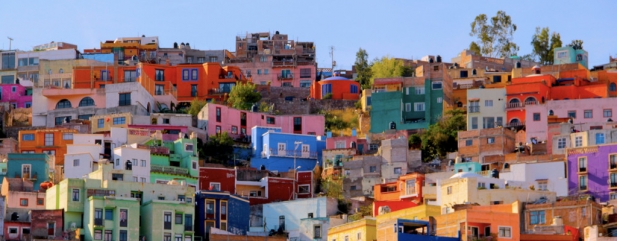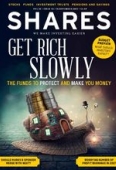Archived article
Please note that tax, investment, pension and ISA rules can change and the information and any views contained in this article may now be inaccurate.
Using funds to invest in Latin America

Latin America as a region is dominated by the economic powerhouse that is Brazil. Therefore funds focused on the region that are market cap weighted will tend to have a lot of stocks held on the Brazilian stock exchange, the Brasil Bolsa Balcão (B3).
Brazil had a spectacular fall from grace in 2015 due to the US dollar strengthening against the Brazilian Real which dramatically reduced the B3’s market cap.
But Brazil is back. Angel Ortiz, fund manager of the Fidelity Latin America Fund (LU1033664027), says there have been some positive developments recently on the macro/economic picture in
Brazil. ‘Inflation has come in below expectations in recent months and is now at a decade low which means the central bank has room to reduce interest rates further.’
Growing middle classes
Ortiz says due to this improving economic context, Brazilian stocks in the consumer and financial sectors are reaping the rewards. These sectors are not traditionally associated with Latin America’s strengths; it’s largely known as a commodity exporter. But after the commodity price crash in 2015, the market further diversified.
Ortiz is confident these sectors will continue to perform. He says ‘benefits will continue as the government passes more business friendly labour reforms through parliament’.
Luiz Carrillo, manager of the JP Morgan Latin America Equity Fund (LU0522352862), is also a fan of these sectors, which he views as having benefited from Brazilian banking reforms.
Carilllo says Brazilian banks are poised to increase lending ‘which should spur consumer spending and allow the economy to deliver above trend growth’.
While the Fidelity and JP Morgan funds have a heavier weighting towards consumer and financial stocks, given Latin America’s prowess as a commodity exporter it would be a mistake to ignore the sector.
Hot commodities
Fidelity’s Ortiz invests in mining entity Grupo Mexico which he says has some of the ‘best quality copper assets in the world’.
However, Ortiz can’t really be described as a commodity bull. He has an underweight position in giant Brazilian steel producer Vale.
‘While a stronger iron ore price has been helping the company in the short term, our longer-term forecasts for the commodity are less bullish so I feel that the current valuation is not sustainable,’ he says.
Petrobras is one of the largest companies in Brazil but Ortiz is cautious due to its large state ownership. He views the oil refining giant as having a ‘debt burden which subsumes all equity value’.
If you chose a passive market cap weighted Brazil fund, it would have a heavy weighting towards Petrobras due to its sheer size.
However, Will Landers, manager of the BlackRock Latin American Investment Trust (BRLA) has Petrobras and Vale as his top three and four holdings respectively. He says ‘our commodity positions are predicated on company specific fundamentals that we believe will drive those stocks higher’.
The commodity issue is a good example of how different fund managers view Latin America. While all the funds mentioned have Brazilian financial services company Itau Unibanco as their top holding, the differing views on energy companies could be vital in determining whether a fund generates returns or losses.
Not just the boys from Brazil
While Brazil is the largest economy in Latin America, there are other countries with their own merits. BlackRock’s Landers plays the inter-region trading between Latin American countries to his advantage.
He says Argentina is ‘for sure the best candidate for an up and coming country’. He adds Brazil is Argentina’s most important trading partner and the recovery in Brazilian activity is an additional positive for Argentina’s economy.
JP Morgan’s Luiz Carrillo now has its largest ever exposure to Argentina, around 5% of the portfolio, although the bulk is
still in Brazil and Mexico.
He says market friendly results from previous elections coupled with improving consumer confidence should create powerful tailwinds for Argentinian equities.
Political risk
One of the biggest dangers investors face when looking at Latin America is political risk.
In Brazil, the impeachment of president Dilma Rousseff in September 2016 drove a strong sentiment-led rally on the hope of economic reform. However, the country’s recovery is still fragile since the political turmoil in May this year.
President Michel Temer was caught up in the investigations into corruption involving some of the country’s biggest companies. His case wasn’t helped when allegations of a tape of Temer discussing ‘hush money’ emerged.
Mexico was impacted by the election of US president Donald Trump which potentially puts negotiations regarding the North America Free Trade Agreement (NAFTA) into jeopardy. A benign negotiation is vital for economic stability in the country.
On a more positive note, the victory by Argentina’s president Mauricio Macri in the country’s midterm elections last month solidifies the reform agenda started two years ago. This included a gradual reduction in inflation and improvement in fiscal accounts, allowing for economic activity to recover.
In Peru, one of the world’s largest silver exporters, the election of president Pedro Pablo Kuczynski in July 2016 is seen as pro-market. The election also allows for clear visibility during his term in office for the next three to four years. (DS)
Important information:
These articles are provided by Shares magazine which is published by AJ Bell Media, a part of AJ Bell. Shares is not written by AJ Bell.
Shares is provided for your general information and use and is not a personal recommendation to invest. It is not intended to be relied upon by you in making or not making any investment decisions. The investments referred to in these articles will not be suitable for all investors. If in doubt please seek appropriate independent financial advice.
Investors acting on the information in these articles do so at their own risk and AJ Bell Media and its staff do not accept liability for losses suffered by investors as a result of their investment decisions.
Issue contents
Big News
- Bakkavor’s renewed appetite for IPO
- UK construction in recession
- Can Workspace fight off WeWork’s competitive threat?
- Worrying number of profit warnings in 2017
- IQE cash call gets huge backing
- CityFibre strikes ultra-fast fibre deal with Vodafone
- Insurer opens doors to retail investors with £600m IPO
- Brighter prospects for drugs giant AstraZeneca

 magazine
magazine










